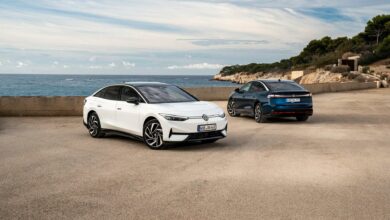How to crack the economics of EV charging

Stay informed with free updates
Simply sign up to the Electric vehicles myFT Digest — delivered directly to your inbox.
Electric vehicles have a chicken-and-egg problem. Drivers used to buying gas are balking at having to rely on a visibly smaller network of public charging locations, under 65,000 in the US, compared with 145,000 petrol stations. They also resent that even the fastest chargers take much longer than pumping gas, while the slower “Level 2” equipment that is most commonly available can take hours.
These customers want more, and faster, charging. But those who own public chargers have often been unable to make back their cost of installation and operation. Many do not get enough use to be profitable, others lose customers because long charging times lead to crowds at peak periods.
Under pressure to cut costs, Tesla chief executive Elon Musk fired the company’s entire supercharger division last month, and while he has partly relented, network growth is going to slow. Tritium, a smaller company, recently notified regulators it was insolvent. And shares in two US charging networks that went public to great fanfare in early 2021, EVgo and ChargePoint, are since down more than 90 per cent.
Without subsidies, “the unit economics just don’t work”, explains Quinn Pasloske, of Greenbacker Capital, a sustainable infrastructure investor.
As the number of EVs on the road has risen, the number of public chargers has not kept pace, driving up frustration and scaring away potential EV buyers. But there are still too few users to justify an extensive national network, potentially stifling further adoption.
Breaking this cycle requires a fresh look at the economics of EV charging. Rather than trying to install equipment everywhere, all at once, entrepreneurs need to concentrate their high-speed offerings where they can have the most impact.
“You really see a big disparity between the best sites and the sites that weren’t as attractive from a traffic point of view,” says David Giordano, global head of climate infrastructure at BlackRock, which is backing efforts to build a high-speed zero-emissions charging network along critical freight routes.
Less busy sites will require more creative approaches — and subsidies from carmakers and policymakers keen to speed EV adoption. Walmart and Starbucks see the service as a way to drive additional customer traffic, rather than expecting it to be profitable on its own. In the US Midwest, casinos run by Native American tribes routinely offer EV chargers, all the better to woo visiting gamblers. Revel, also backed by BlackRock, combines a charging business with an electric ride-share service whose cars can help ensure constant demand.
Networks also need to leverage the fact that EVs, unlike petrol cars, do not have to be attended while they juice up. If slow chargers become widely available at locations such as hotels, shopping malls and universities, drivers will gradually get used to charging at places where they are already expecting to stay for several hours.
Some entrepreneurs are trying to extend that principle to city streets, large apartment complexes and municipal parking lots. Munich-based Qwello installs moderate speed chargers in the city centre parking concessions that it runs for 300 municipalities in seven European countries. The parking fees defray much of the capital costs, so relatively low usage is less of a barrier.
“In the land grab for EV charging infrastructure, there will be winners and losers as the market sorts out ideal venue, adoption rate and charging speed,” says Emil Henry, founder and CEO of Tiger Infrastructure, which backs Qwello.
In recent weeks, carmakers have warned of slowing EV sales and the Biden administration’s plan to levy high duties on Chinese imports will probably make things worse. But sometimes a pause is needed to set the stage for a lasting transition.
Think back to the late 1990s, when the dotcom bubble fuelled all manner of retail internet dreams. Most of them crashed and burnt because their potential customers lacked the high-speed broadband and cellular service needed to make those businesses real. That initial enthusiasm proved shortlived, but sparked greater investment in technology infrastructure. This in turn made possible the giant ecommerce and platform companies that now form the backbone of our economy.
For cars, a slowdown should buy time for battery improvements to boost range and speed up charging. Once drivers can go farther, their need for high-speed roadside equipment will moderate. It may be impossible to fully replicate the current petrol station network. But it looks like we will not have to.



